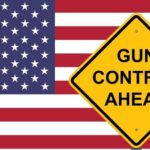Good decisions in some cases, judicial nullification in some others.
Federal circuit courts of appeal continue to have an uneven record in enforcing Second Amendment rights. Last week, Lincoln Memorial University‘s Duncan School of Law (in Knoxville, Tenn.) held a Second Amendment symposium. My article Federal Circuit Second Amendment Developments 2018, will be published later this year in the school’s law review.
In 2018, the federal circuits delivered mixed decisions on magazine confiscation. The Third Circuit denied a preliminary injunction against New Jersey’s new confiscation law, while the Ninth Circuit affirmed a district court’s injunction against California’s older confiscation statute. Both decisions were 2-1.
The circuits also split on whether there is a meaningful right to “bear arms.” In Massachusetts, the normal practice is that a license to own a handgun also functions as a license to carry concealed for lawful protection. But Boston and its suburb Brookline often deny carry permits to qualified citizens. The First Circuit upheld the negation of the right to bear arms. In order to do so, the First Circuit abandoned its established test in Second Amendment cases, which looked at text, history, and tradition. Now, the First Circuit uses the Two-Part Test applicable in most other circuits. Switching tests gave the First Circuit the opportunity to apply an unusually weak form intermediate scrutiny in order to upheld the negation of a textual right. Meanwhile, the Ninth Circuit ruled against the County of Hawaii (the Big Island) issuing open carry permits only to security guards. I analyzed the Young v. Hawaii decision in a previous post.
by David Kopel



